Oil Rigs
-
- Fuel Management & Safety Maritime Logistics Professional, Q3 2014 #20
The 2015 Baltic ECA requirements make the increase in marine casualties inevitable. You can do something about it.
The march towards cleaner air in coastal areas is well underway. For example, the International Maritime Organization (IMO) amended the International Convention for the Prevention of Pollution from Ships (MARPOL) designating specific portions of U.S., Canadian and French waters as Emission Control Areas (ECA) in 2010. Since August 2012, the use of fuel oil which does not exceed 1.0% sulfur has been required. Ramping up the pressure even further, the limit drops to 0.1% sulfur in January of 2015. At this point, the use of distillate fuel will mandatory within the ECA.
Separately, the State of California – typically a leader in green initiatives – has for almost five years required ships to use distillate fuel within 24 miles of the coastline. As with many statutes created to improve life at one end of the spectrum, the requirements also come with unintended consequences. A well-documented increase in casualties involving Loss of Propulsion (LOP) has dogged the policy in California. To date, none of these incidents has resulted in a collision, allision or grounding. The myriad reasons for this trend, to one extent or another, all center around the switching from heavy fuel oil to distillates as the vessels enter the Golden State’s local ‘ECA.’
What operators do in the face of the coming environmental storm can make all the difference. Failing that, the policy of ECA’s will certainly clean up the air that we breathe, but at the same time, (possibly) polluting coastal waters. That said; you have options.
A Change of Course
One way to limit the need to burn more expensive distillates is to simply change the routing of the vessels involved. The use of a great circle course until the ship is directly east or west of its destination, and then proceeding straight into that port using a rhumbline is one way to approach the problem. Unfortunately, the cumulative impact of changing routes will add more than one million miles to the collective voyages of these vessels. But while burning less desirable HFO during those longer routes, the net benefit to the bottom line is completely negated.
Unlike ships enroute to the United States, traffic headed for Northern Europe will have to transit the English Channel. And, unlike arrival into the United States, where ships are typically still in open ocean after the switchover, these Channel and North Sea bound ships will be in close proximity to the European coastlines and considerable numbers of oil rigs. The increased risk is obvious in the event of an LOP situation in this scenario.
Loss of Propulsion – Unintended Consequences
California’s Loss of Propulsion (LOP) incidents averaged 23 incidents per year on HFO prior to 2009. Following the enactment regulations requiring distillate fuel use there, that number jumped almost 200 percent. Extrapolating this data to other places where similar regulations will soon take effect provides some chilling conclusions. For example, the potential number of LOP incidents in the Gulf of Mexico could increase by 164 – or one every other day based on current traffic levels. All of this could occur within shouting distance of as many as 4,000 shallow water oil rigs, 800 manned oil rigs and 94 deepwater oil rigs in the Gulf of Mexico.
The UK Maritime & Coastguard Agency counts as many as 35,581 annual transits in the South West Bound Lane in 2013. During the same timeframe, the Northeast Bound Lane experienced similar levels of traffic. Again using a linear comparison to California traffic and LOP’s, the real possibility of more than 600 LOP events occurring annually exists, with as many as 200 of those events caused by distillate fuel. Given the North Sea’s heavy mix of offshore and gas business, 2015 could bring significant safety issues to the area. As it turns out, neither the U.S. Environmental Protection Agency nor the U.S. Coast Guard conducted risk assessments in conjunction with the evolution of the coming regulations.
There are five different types of loss of propulsion incidents that now occur in California waters. But, beyond the numbers, trends, and (disturbing) possibilities, those operators looking to be impacted by the coming ECA’s have the benefit of taking advantage of California’s learning curve, by paying strict attention to Table 1.
Scrubbers to the Rescue?
Scrubber technology, for many years, has been touted as the panacea for air emissions. Alternate compliance stack gas scrubbers cost about USD 5 to 10 million to install on existing ships for the main propulsion engine(s) and auxiliary generators. Capable of reducing sulfur oxide (SOX) when the less costly HFO is used, it has also been estimated that fuel consumption can increase using the scrubbers by 1.5% to 5%. That can add up. So can the cost of chemicals such as caustic soda, which can amount to as much as 20 tons per week while in the ECA. Beyond this, the typical operation will also consume fresh water if the system is a closed loop scrubber, accentuating the need for robust evaporators to handle the extra demand for fresh water.
Hazardous effluent must be disposed of by either bringing the material to port or releasing it into ocean. An open loop scrubber system may emit wash water with arsenic, copper, lead, nickel and selenium. Clearly, this option comes with its own issues, something each and every operator has to assess in terms of their own situation, when preparing for stricter air emission standards.
Dial in the Weather
Prevailing weather conditions must be taken into consideration when transiting any ECA. That’s because both North Atlantic and North Pacific winter sea states can and do exceed a consistent height of 4 meters with accompanying winds in excess of 25 knots. Engine loads increase in rough seas, which in turn forces the vessel to reduce load on the engine (reducing fuel) and slowing the ship even more. Extra wear will appear on the engine components on vessels which fail to act accordingly, further increasing the likelihood of a LOP. While burning distillate fuel inside an ECA, the potential for an engine casualty increases exponentially.
Alternate Compliance
Currently, ECA regulations related to ECAs list two options for achieving compliance. These include the use of exhaust gas scrubbers (allowing the use of HFO) and secondly, switching to lower sulfur distillates within the ECA. Each method carries its own baggage. Table 2 lays out the implications.Scrubbers and Distillate Fuels: what is the alternative?
In 2009, the California Air Resources Board regulations related to emissions from ships operating within 24 miles of the California coast came into effect with the intent of protecting the public health and reducing emission related health issues. When data for the original Emission Control Area (ECAs) was compiled, the benchmark used ship “hull” speed. Aboard my former ship, consumption at “hull speed” was around 150 tons of Heavy Fuel Oil (HFO) per day. With the price of fuel increasing so quickly over the last five years, ship operators conducted experiments using the concept “slow speed steaming”. What typically was a five ship service was increased to a six ship service, meaning that at the slower speed, six ships provide the same scheduled service as five.
One European ECA study reports findings that suggest that HFO consumption can be reduced by one-third by simply reducing speed by just proceeding 2-3 knots. Beyond this and more to the point, emissions decreased substantially across the board in conjunction with the reduction in speed. In other words, slowing a ship 2-3 knots while using low sulfur heavy fuel oil will cut carbon emissions better than a ship using distillate fuel at full speed. The ship proceeding at slower speed will also have lower NOX emissions than the ship using distillate. Particulate matter emissions will be the same for both described instances. While SOX emissions will be lower for the ship using distillates, the slower ship will have less NOX emissions which offset the SOX emissions and its effect on the environment.
Finally, there is cost. Using low sulfur heavy fuel oil – an ultra low sulfur version is now said to be available in Europe – is less expensive than distillate, not to mention the cost of installing a scrubber or exhaust gas recirculation apparatus. And, let’s not forget the more forgiving nature of HFO versus distillate. Ships will have fewer LOP’s which could result in a catastrophic allision, collision or grounding. At the end of the day, cleaner air should not come at the expense of dirtier water. And, it doesn’t have to.
(As published in the 3Q 2014 edition of Maritime Professional - www.maritimeprofessional.com)
-
- ALP Tugs Get Rolls-Royce Deck Equipment Maritime Reporter, May 2014 #52
Services. The vessels will be constructed in Japan by Niigata Shipbuilding & Repair. The vessels are being developed for towing large structures like oil rigs and floating production units over long distances. The bollard pull for each of the four vessels will be 300 tons and they will be equipped for anchor
-
- A.R. Larsen To Offer Turnkey Interior Services Maritime Reporter, Mar 2002 #23
industry. Since 1985, A. R. Larsen has provided services for new and renovated galleys on commercial ships, fishing vessels, factory trawlers, oil rigs, cruise lines, passenger ferries and pleasure crafts around the Pacific Rim and beyond. For the past year, the company has been closely involved
-
- Aqua-Chem To Move To New Location In Milwaukee, Wis. Maritime Reporter, Jan 1991 #64
plants to purify salt water and brackish water during World War II. It then developed the first of thousands of distilling plants for ships, offshore oil rigs, power plants and major land-based desalination systems. For more information and free literature on products from Aqua- Chem, Circle 36 on
-
- Far East Levingston Names Lovie & Co. U.S. Representative Maritime Reporter, Apr 1976 #43
the shipyard's wide range of design, construction, repair, fabrication, and contracting services. Since 1967, FELS has constructed and serviced offshore oil rigs and associated drilling and specialized auxiliary steel vessels for clients on an international basis. FELS has achieved an expertise in the
-
- Comsat Develops New High-Speed Data Service —Literature Available Maritime Reporter, Aug 1990 #13
in the global Inmarsat mobile satellite network, provides a variety of voice, data, facsimile and telex services to over 11,000 ships, offshore oil rigs, and land transportable terminals throughout the world. According to Ron Mario, Comsat Mobile Communications vice president and general manager
-
- Jordan Lieb Joins Marine Coatings As Vice President Maritime Reporter, Oct 1984 #26
Sealift Command tank linings during the past three years. It is also experienced in commercial tank linings, bulk carrier cargo hold work, offshore oil rigs, and exterior hull and superstructure coating
-
- Newfoundland's Windsor Cites $93 Million In New Projects Maritime Reporter, Dec 15, 1983 #34
repair berths, a 45-meter-high tower crane, and other equipment. A second project involves plans for a $7-million dock for the repair of offshore oil rigs at Marystown Shipyard Ltd., which builds supply and service vessels. By reducing rig repair time by 40 percent, the proposed facility will save
-
- U.S. And Canadian Companies Licensed To Build Vickdock Maritime Reporter, Nov 15, 1983 #27
and at owners of pleasure craft marinas. Versions are used by similar vessels in Australia and Southeast Asia, including workboats servicing offshore oil rigs. "A 39-foot yacht can be lifted, cleaned and re-landed within 90 minutes using the Vickdock, so it should be well possible to handle five or
-
- New Briefcase Computer For Marine Industry From NAV-COM Maritime Reporter, Dec 1985 #12
calculations. GRiD computers have been field tested and are currently in use for a variety of applications ranging from U.S. warships to offshore oil rigs and even on board space shuttle missions. NAV-COM Incorporated is a leading U.S. marine electronics firm specializing in the integration of complex
-
- Avondale Industries Wins Floating Prison Contract Maritime Reporter, May 1989 #25
counter. Avondale has been a successful shipyard for 50 years, engaged in the design and construction of naval ships, commercial vessels, offshore oil rigs and other marine projects. It currently has eight ships under construction for the U.S. Navy. The firm has pioneered the concept of modular floating-fa
-
- Balehi Marine Converts Crewboat Into Party Charter Yacht 'Celebrity' Maritime Reporter, Apr 1989 #4
necessary because the hull had been extensively dented, as happens to crewboats in rough water service when loading crews and supplies up against oil rigs in heavy seas. A complete new electronic package was installed, consisting of Raytheon radar and loran, Uniden VHF, Apelco hailer, Data Marine Fathome
-
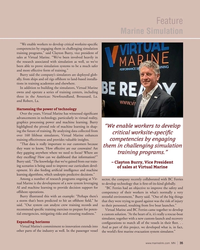 )
February 2024 - Marine News page: 35
)
February 2024 - Marine News page: 35simulation systems to be a much safer and more effective form of training.” Burry said the company’s simulators are deployed glob- ally, from ships and oil rigs offshore to land-based installa- tions in training academies and elsewhere. In addition to building the simulators, Virtual Marine owns and operate
-
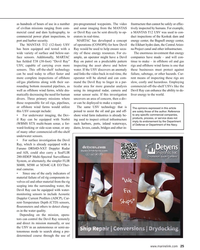 )
May 2023 - Maritime Reporter and Engineering News page: 25
)
May 2023 - Maritime Reporter and Engineering News page: 25. If this investigation liver energy to the world. divers. Three primary missions where uncovers an area of concern, then a div- those responsible for oil rigs, pipelines, er can be deployed to make a repair. or offshore wind farms would utilize The same USV technology that is The opinions expressed in
-
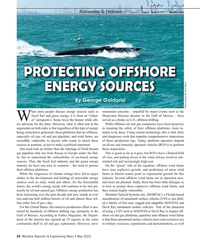 )
May 2023 - Maritime Reporter and Engineering News page: 24
)
May 2023 - Maritime Reporter and Engineering News page: 24, more re- being extracted or generated, those platforms that are offshore, mains to be done. Using current technology, this is dull, dirty especially oil rigs, oil and gas pipelines, and wind farms, are and dangerous work that impedes comprehensive inspections incredibly vulnerable to anyone who wants
-
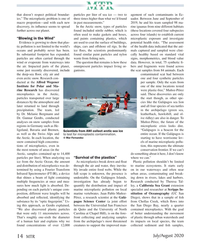 )
July 2020 - Marine Technology Reporter page: 14
)
July 2020 - Marine Technology Reporter page: 14are used to coat the surface of buildings, potential health risks. “The assessment tic pollution is not limited to the world’s ships, cars and offshore oil rigs. In the of the health data indicated that the ani- oceans and probably never has been. ice ? oes, the scientists predominantly mals captured and
-
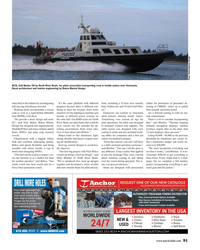 )
November 2018 - Maritime Reporter and Engineering News page: 91
)
November 2018 - Maritime Reporter and Engineering News page: 91turmoil, cruising unsafe waters. side contaminants. “We provide a basic design and mod- the same hull. Our BMD series for North Transferring crew around oil rigs for There’s a lot to consider incorporating ify,” said Nick Boksa. Boksa Marine River Boats are pilot boats that could be joint operations, the
-
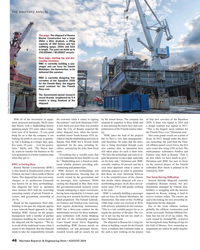 )
August 2018 - Maritime Reporter and Engineering News page: 46
)
August 2018 - Maritime Reporter and Engineering News page: 46the shipyard and the logistics. “We try Coast Guard vessel Turva. Regarding The shipyard in Rauma has a long tra- for having built many ? oating oil rigs for to avoid all the traditional issues when it newbuildings RMC focuses mainly on dition in building vessels for the Finnish the Gulf of Mexico
-
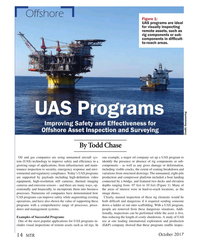 )
October 2017 - Marine Technology Reporter page: 14
)
October 2017 - Marine Technology Reporter page: 14popular applications for UAS programs in- use at one leading international exploration and production cludes visual inspections of remote assets such as oil rigs. In (E&P) company showed that these programs enable inspec- 2017 October 14 MTR MTR #8 (1-17).indd 14 MTR #8 (1-17).indd 14 9/28/2017 2:38:56
-
 )
September 2017 - Maritime Reporter and Engineering News page: 18
)
September 2017 - Maritime Reporter and Engineering News page: 18distance of as many as handling equipment by 2030. And while the casual observer probably another kind of ‘green.’ That doesn’t 4,000 shallow water oil rigs, 800 manned Separately, a recent industry study, ? nds it dif? cult to feel sorry for a port always happen. What will be the impact oil rigs
-
 )
April 2017 - Marine Technology Reporter page: 13
)
April 2017 - Marine Technology Reporter page: 13situational awareness of real time weather and current con- were actually in? ection points for technology. Adoption of in- ditions around offshore oil rigs. In addition to METOC mis- novative technology allows companies to remonetize the cost sions, Wave Gliders are being used by the oil and gas industry
-
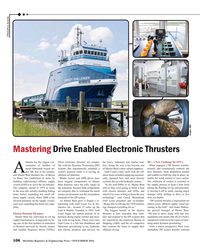 )
November 2016 - Maritime Reporter and Engineering News page: 106
)
November 2016 - Maritime Reporter and Engineering News page: 106the boats to supply their From a macro perspective there were and variable frequency drives (VFDs). and electric products and services for offshore oil rigs. immediate DP system bene? ts realized 106 Maritime Reporter & Engineering News • NOVEMBER 2016 MR #11 (106-113).indd 106 11/4/2016 3:36:08 P
-
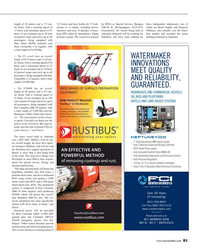 )
November 2016 - Maritime Reporter and Engineering News page: 81
)
November 2016 - Maritime Reporter and Engineering News page: 81WIDE RANGE OF SURFACE PREPARATION length of 48 meters and a 9.5 me- WORKBOATS AND COMMERCIAL VESSELS EQUIPMENT. ter beam, with a cruising speed of OIL RIGS AND PLATFORMS 21 knots. It can transport up to 250 NEW PRODUCT RELEASE! tons of general cargo and carry up to HOTELS AND LAND-BASED SYSTEMS Rustibus®
-
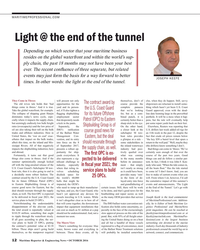 )
October 2016 - Maritime Reporter and Engineering News page: 12
)
October 2016 - Maritime Reporter and Engineering News page: 12, Reuters was reporting that oil are also taking their toll on the bulk IMO’s rati? cation a closer look at the U.S. drillers last week added oil rigs for course good news for trades and offshore industries. Here in of the Ballast Water subchapter M tow- an 11th week in the past 12, despite the
-
 )
September 2016 - Marine News page: 24
)
September 2016 - Marine News page: 24. seaboard, the move would only be interim and temporary. Vigor is currently constructing several car ferries for Barrel prices are sure to rise and the oil rigs will soon be Washington State Ferries, two car daytrip ferries for Alaska back at work, beckoning high demands for crew boats, Marine Highway System
-
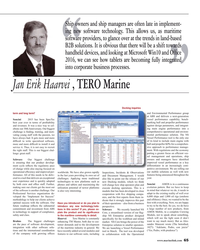 )
March 2016 - Maritime Reporter and Engineering News page: 65
)
March 2016 - Maritime Reporter and Engineering News page: 65de- adapt to the existing reality of well over cooperation with ? ve shipping compa- veloped the “Implement for Success” 6,000 ships and 1,000 oil rigs (onshore nies, and the ? rst reports from them in- methodology to help our clients achieve dicate that it strongly improves this part and offshore)
-
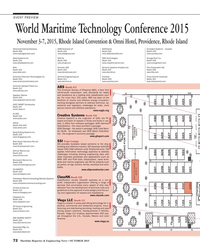 )
October 2015 - Maritime Reporter and Engineering News page: 72
)
October 2015 - Maritime Reporter and Engineering News page: 72as MRP, ERP and PLM tools. Shipbuilders, naval archi- Bronswerk Marine Inc. tects and marine engineers use SSI for projects such Booth 228 as yachts, oil rigs, tankers, ferries, warships and work- www.bronswerkgroup.com boats. CD-ADAPCO www.shipconstructor.com Booth 203 www.cd-adapco.com ClassNK Booth 220
-
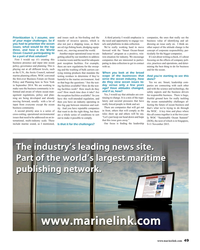 )
June 2015 - Maritime Reporter and Engineering News page: 49
)
June 2015 - Maritime Reporter and Engineering News page: 49not just a shipping issue, as there sels and platforms in data collection. dressing an issue early on. I think an- issues, what would be the top are oil rigs ? shing boats, dredging equip- We’re really working hard to move other aspect of the attitude change is the three, and how is the World ment,
-
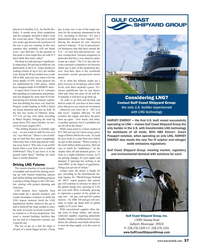 )
June 2015 - Maritime Reporter and Engineering News page: 37
)
June 2015 - Maritime Reporter and Engineering News page: 37. In – otherwise you won’t do it – $55 is at with LNG technology the last two weeks of February alone, that level,” explains McCaul. “It will 177 U.S. oil rigs were idled, according constrict the supply and drive the price to Baker Hughes, bringing the total rig back up again – how much, and when, +$59(<(1(5*<
-
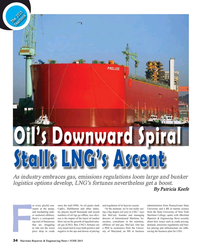 )
June 2015 - Maritime Reporter and Engineering News page: 34
)
June 2015 - Maritime Reporter and Engineering News page: 34try players layoff thousands and record ing a big degree [of use] in LNG,” says from the State University of New York er anchored offshore, numbers of oil rigs go of? ine, less obvi- Jim McCaul, founder and managing Maritime College, spoke with Maritime there’s a correspond- ous is the impact of the latest
-
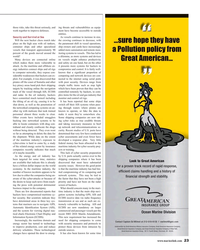 )
June 2015 - Maritime Reporter and Engineering News page: 23
)
June 2015 - Maritime Reporter and Engineering News page: 23safety on one hand, but on the other attack. As the maritime and offshore en- it presents more systems for hackers to ergy industries connect ships and oil rigs compromise and control. It is fairly well- to computer networks, they expose con- known that a signi? cant proportion of siderable weaknesses that
-
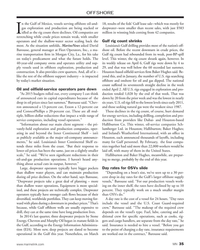 )
May 2015 - Marine News page: 35
)
May 2015 - Marine News page: 35because of the down by 20 from the prior week and was the lowest in nearly drop in oil prices since last summer,” Barousse said. “Chev- six years. U.S. oil rigs fell to the lowest levels since early 2011, ron announced a 13-percent cut, Exxon a 12-percent cut and those seeking natural gas were the weakest
-
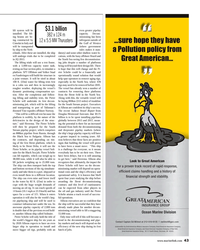 )
December 2014 - Maritime Reporter and Engineering News page: 43
)
December 2014 - Maritime Reporter and Engineering News page: 43the title of the world’s biggest ship for six years as by 2020 Allseas expects to have an even larger ship in operation to install and move bigger oil rigs, probably with an even greater pipelay capacity. Decom- missioning has been infrequent outside of the Gulf of Mexico (where government
-
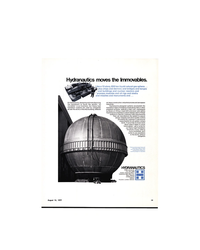 )
August 15, 1977 - Maritime Reporter and Engineering News page: 19
)
August 15, 1977 - Maritime Reporter and Engineering News page: 19, 850 ton liquid natural gas sphere... plus ships and derricks and bridges and barges and buildings and nuclear reactors and process modules and oil rigs and stadia and missiles and monuments and ... At Hydranautics, designing and manufacturing the equipment to move the world's "im- movables"
-
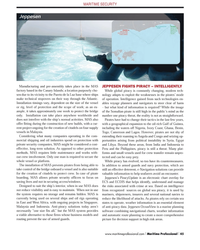 )
Q3 2014 - Maritime Logistics Professional page: 45
)
Q3 2014 - Maritime Logistics Professional page: 45visibility and is easy to maintain. When not in use the system requires no storage and remains hidden. MAS is currently being used on several ships and oil rigs operating in East and West Africa, with ongoing projects in Singapore, Malaysia and Indonesia. Anti-piracy solutions today aren?t necessarily
-
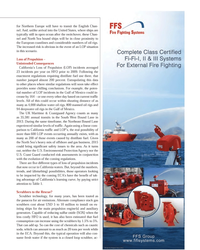 )
Q3 2014 - Maritime Logistics Professional page: 21
)
Q3 2014 - Maritime Logistics Professional page: 21ocean after the switchover, these Chan- nel and North Sea bound ships will be in close proximity to the European coastlines and considerable numbers of oil rigs. The increased risk is obvious in the event of an LOP situation in this scenario. Loss of Propulsion ? Unintended ConsequencesCalifornia?s Loss
